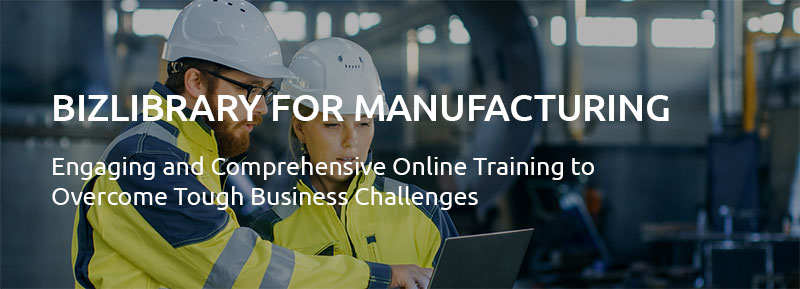The manufacturing industry certainly didn’t escape the disruption of the pandemic, but there are reasons to feel positive about its outlook this year. Agility has been the name of the game, and as manufacturers continue to rebuild, many of last year’s forced innovations will propel organizations into improved working rhythms.
Consider the skilled labor shortage in the manufacturing industry—an issue long before the novel coronavirus came on the scene. In the National Association of Manufacturers fourth-quarter survey, talent attraction and retention proved the most pressing business challenge for manufacturing leaders. For 28% of executives surveyed by Deloitte, manufacturing skills training and upskilling is their biggest workforce challenge.
Let’s take a look at where this skilled labor shortage came from and explore possible solutions for your manufacturing workforce.
Why Is There a Manufacturing Skills Gap?
There are far more job openings—hundreds of thousands—than there are trained workers to fill them. A 2018 study by Deloitte and the Manufacturing Institute found that 2.4 million positions may go unfilled by 2028. This shortage of skilled workers comes from the changing nature of the workforce and of the manufacturing work itself.
The industry’s baby boomers have swiftly been aging out of the workforce and into retirement, taking their decades of expertise with them. Succession planning proves to be a challenge; even when there are successors with the manufacturing skills needed to take over the baby boomers’ jobs, there are still more vacancies left in the lower-rung roles that then need to be backfilled.
Younger generations lack interest in the industry, often minimizing its significant role in the future of work. For years, manufacturing companies have been plagued by outdated perceptions of the work.
In fact, manufacturing work is far more technically advanced, clean, and efficient than young talent may readily understand. Without their interest, there aren’t enough budding manufacturing workers to train on the new technologies being introduced, and new employees who do join the team will often need months of training before becoming proficient. The skillsets required of manufacturing workers today include programming automated systems and robots, software troubleshooting, digital skills, technical tool and machine skills, and critical thinking.
The manufacturing skills gap can’t be fixed overnight, but forward-thinking companies will take a long-term approach in solving the shortage.
Ways to Narrow the Manufacturing Skills Gap
There are a lot more viable options than there used to be for effectively training workers in the skills they need for their roles. Here are a few strategies you can use to efficiently close skill gaps and see both short-term and long-term results.
Upskill and Reskill Your Workforce
Continuous learning is the clear way forward for addressing any skill gaps among your employees today. Manufacturers need to retrain industrial workers to leverage artificial intelligence and robotics, both in individual contributor workflows and from a management perspective.
An assembly line worker, for example, may be reskilled as a robotics programmer for additive manufacturing work. A blended learning approach of on-the-job and online manufacturing training programs, incorporating instruction on heavy equipment training and digital machinist training, can engage many generations of employees in new types of work.
BizLibrary is here to help with the online portion of your training program. In addition to The BizLibrary Collection, we now offer a specialty library designed to train industrial workers on crucial manufacturing skills. This manufacturing library is available from our producer partner, Tooling U-SME.
Develop Career Paths for Your Blue-Collar Workers
Career pathing gives employees and prospective recruits an incentive to stay with or choose your company, and it also sets a learning trajectory to outline what new skills they’ll need to acquire. Career pathing is all too often reserved for white-collar workers climbing the corporate ladder, but specialization and management roles should be available to any employees who want to work toward those goals.
Show your plant and factory workers how to go from fundamental machining work to CNC programming or up to toolmaking, for instance, how to go from assembler to mechanic, or how to start in maintenance and become an automation technician.
Create learning pathways to demonstrate the courses and time it’ll take to learn the skills for each job, and then let your newly empowered employees take the initiative in moving their careers forward.
Participate in Apprenticeship Programs
In order to build a pipeline of educated future workers, you’ll need to work with the schools. High school, trade school, and college students are in a position to be primed as future talent for your organization.
Some companies have taken the opportunity to partner with educational institutions to provide training material and hands-on instruction; this type of outreach can also garner interest in your organization once students are ready to apply for jobs. Other companies offer paid apprenticeships to teach role-specific skills on the job—Amazon’s Mechatronics and Robotics Apprenticeship program is an example of this.
As your organization faces another year of disruption and innovation, consider what moves you can make right now to build your talent pipeline and close the skills gap in the years ahead.
BizLibrary’s online learning solutions have helped manufacturing organizations for years with their training needs – now we’re prepared to deliver even more with our partnership with the industry experts at Tooling U-SME.
Learn more about our content library for manufacturing, and get in touch to see how our training solutions can work for you!

